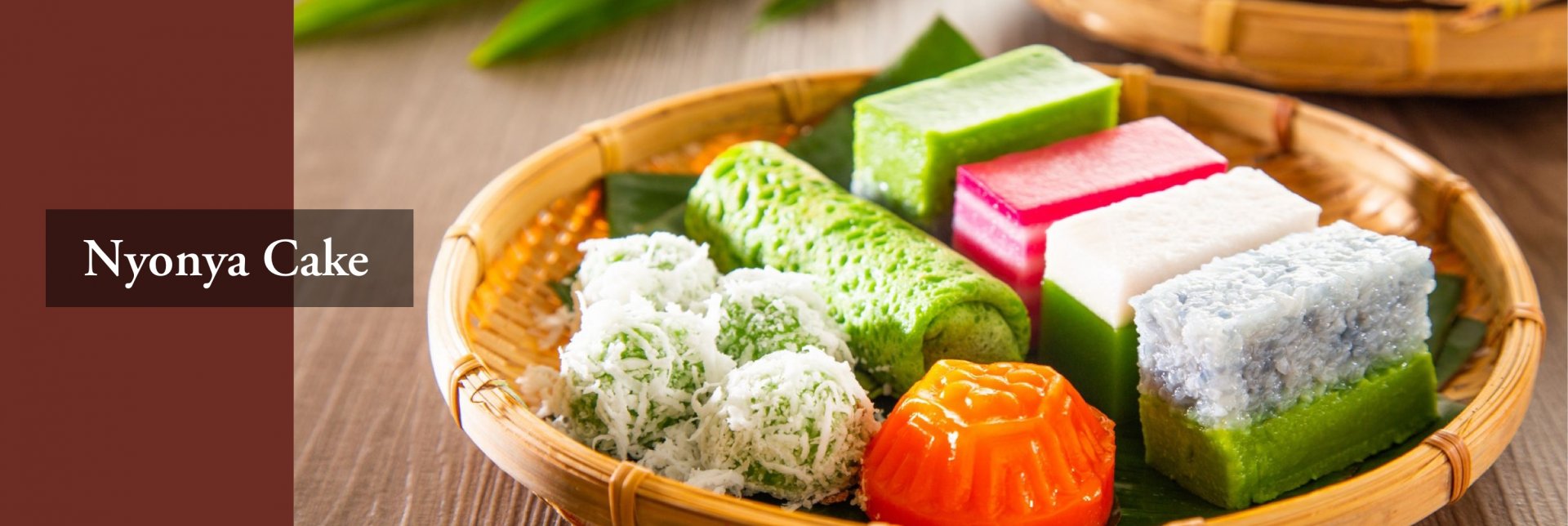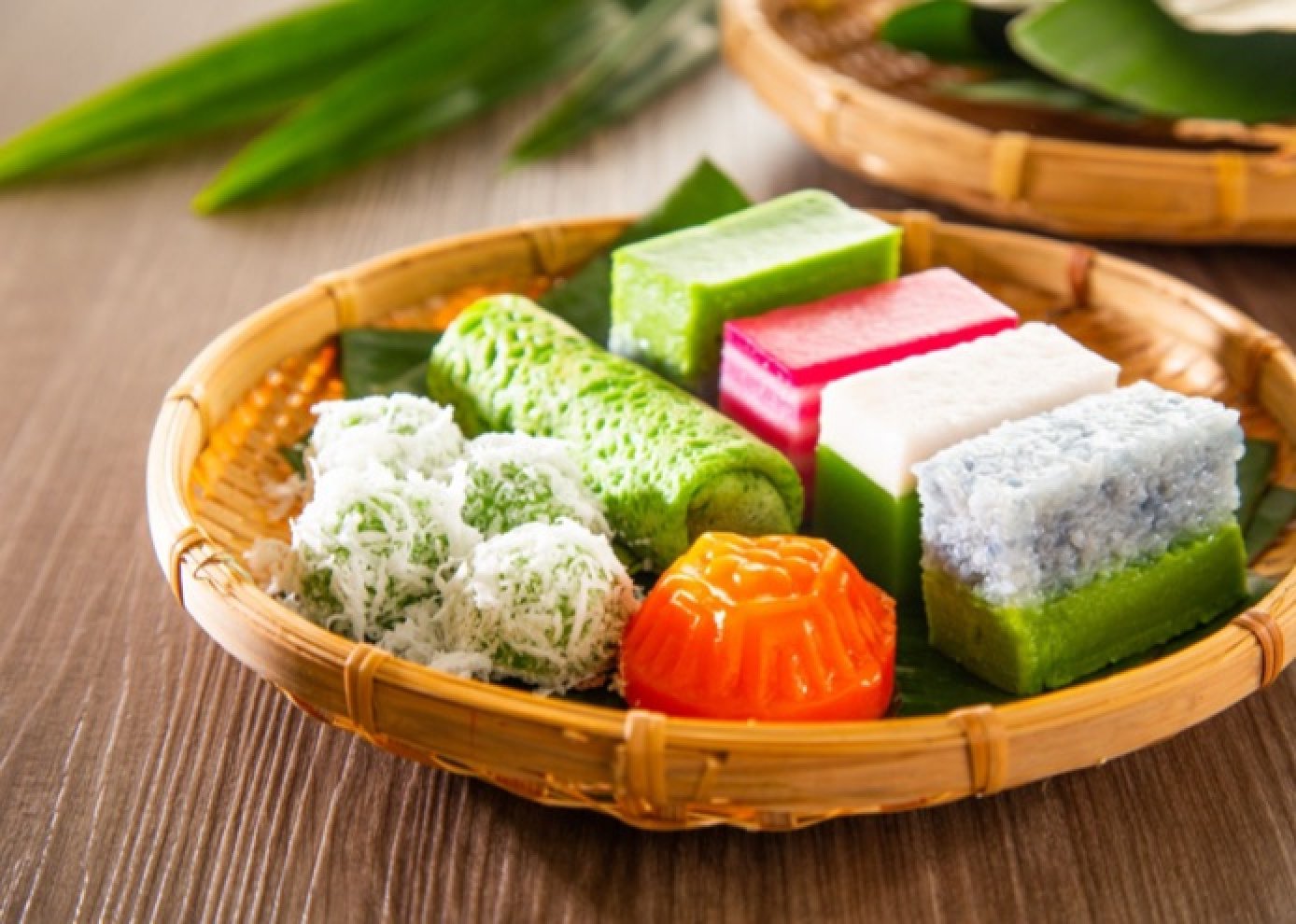Nyonya Cake
Nyonya cake is one of my favorite Indonesian snacks. When I lived in Indonesia as a child, Nyonya cake was sold in vegetable markets, pastry stores, school welfare clubs, grocery stores, or by street vendors carrying bamboo baskets from door to door every day. There are 1340 ethnic groups in Indonesia, and Nyonya cake is loved by different ethnic groups and can be said to be the national snack of Indonesia.
Most Nyonya cakes are made from glutinous rice and rice from Jelay, so they have a fragrant rice flavor and soft texture. As Indonesia is located on the equator, abundant with coconuts, so people make Nyonya pudding with local ingredients of the coconuts, producing pudding with a strong coconut flavor, smooth and delicate texture.
In addition to glutinous rice and Lai Lai rice, other ingredients such as Tapioca flour, Sago flour, and Mung bean flour, as well as Pandan leaves are often added while making Nyonya cakes for aroma and also to make the soft cakes to taste more chewy, smooth or with distinct taro flavor.
In addition, people often use coconut palm sugar and coconut shreds to make Nyonya cakes. They also like to wrap the cakes with banana leaves, or use banana leaves to make containers or for decoration, which adds fragrance to the cakes and creates sentimental appeal. A bite bursts in full joyful surprise, sweetness, with happiness welled up in the heart.

Besides Indonesia, the Nyonya cake can be found in many South Asian countries including Singapore, Malaysia, Thailand, Brunei, Vietnam, Burma, etc., which also comes in many different varieties, salty and sweet, fried and steamed, boiled and baked. But most of them are steamed as it’s not difficult to make, but is very particular with the cooking procedures.

The origin of Nyonya cake is inextricably linked to the migration of Chinese people to the South Asia.
Immigrants always bring the food of their homeland. Many Nyonya cakes look similar to the traditional Chinese cakes. For example, the most representative Nyonya cake, the thousand-layer rice cake (Kue lapis in Indonesian, Kuih Lapis in Malaysian, Nyonya Nine-layer Rice Cake in English), looks similar to the Hakka nine-layer cake and Minnan nine-layer kuey teow. The appearance of other Nyonya cakes is also similar to that of red turtle cakes, fried piles (sesame balls), Zhuang Yuan 状元cake, Tang Yuan, or rice cakes. However, after a bite, you will find the taste and aroma are different.

The origin of Nyonya cake is a variation of traditional Chinese pastry, and can be regarded as a branch of Chinese pastry.
In the early years, those who came from China to the Southeast Asia were mainly men, and when they settled down in foreign countries, they married local women and spread their branches.
The interracial marriage naturally led to the integration of clothing, living habits and food. When the Chinese intermarried with the Malays, Javanese, and Balinese, the original Chinese cuisine and cakes were gradually combined with local ingredients to produce new dishes, and the Nyonya cake was created in this context. The word Nyonya is derived from the Malay word Nyonya, which is used to address a married woman, meaning "wife" in Chinese.
In Southeast Asia, the name of Nyonya cake differs from region to region. In Singpore and Malaysia, it is called Nyonya Kueh or Nyonya Kuih, directly translated into Chinese as "Homewifte’s Cake". “Kueh” and “Kuih” are derived from the Hokka word for kueh, later incorporated into Indonesian and Malay as the term for the type of cake.
In Indonesia, Nyonya cake is called Kue basah, or Jajan pasar, Jajanan pasar, directly translated to "moist pastry" or "market snack", mainly because Nyonya cake is mainly made through steaming, and is a must-have pastry in traditional markets.
One day, if you have the chance to taste Nyonya cake, please savor the wonderful and fascinating flavor that comes from the exchange of racial communities, just like the ever-changing Southeast Asia.


All articles/videos are prohibited from reproducing without the permission of the copyright holder.




Welcome to leave a message:
Please Sign In/Sign Up as a member and leave a message